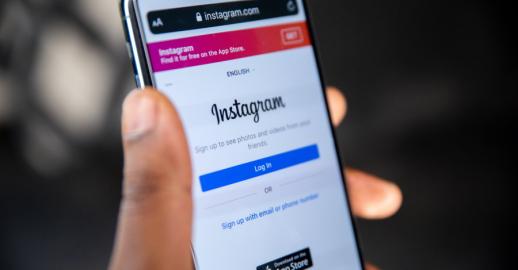The Retailer’s How-To Guide: Selling on Facebook and Instagram
6th March 2020
71% of adults with internet access use social media. Therefore, it is justified to assume that ecommerce businesses can benefit from marketing both organically and through paid advertising on platforms like Facebook and Instagram to gain reach, visibility and an improved customer purchasing journey.
Often, social media users look to the different social platforms for product information, customer reviews, discounts and inspiration. By using the shopping tools available on such platforms your brand can be instantly more desirable to a shopper on the lookout for the products that you sell. Here we’ll take a look at some best practices for selling products on Facebook and Instagram.
Adding A Shop To Your Facebook Page
To make your products more visible and accessible, you can add a Shop section to your Facebook page so customers can buy your products directly from Facebook. If you have a Business Facebook page the process to set up your shop is simple to follow.
Once you have a shopping feed, products can be tagged meaning consumers can easily click through to your business’s website and make a purchase. The shop feature alone on your Facebook page is useful and does add visibility, however few users will frequently visit your homepage (unless they are a very loyal customer), so by tagging product information through your shop you’ll enable more fans of your page to see this information and click on it.
Getting Shoppable On Instagram
Product Tagging On Your Feed
Did you know that 70% of shopping enthusiast turn to Instagram for product discovery? Or that every month, 130 million people tap on an Instagram shopping post to learn more about products? Due to the visual nature of Instagram, the customer journey is made easier and more instant without the user even having to leave the app to buy a product. Simply, using this tool eliminates guesswork. Your followers can move from product inspiration to purchase in a way that is organic to the Instagram experience.
Once you’re set up with Instagram Shopping, you can tag your products in the photos to add them to your store catalogue. This will mean that each time you post to your feed, you can showcase your product line. Alongside this easy-to-use feature, you have to use the platform as effectively as possible – namely, by perfecting great captions suiting your company’s tone and clear, visually appealing images timed to perfection as you would with any advertising campaign.
Something that should be considered when deciding whether Instagram shopping is a good idea for your retail business is to remember that Instagram shopping posts allow you to tap into an already engaged audience. Your followers are clearly already interested in your brand, because they follow you and want to look at your posts, so it is a prime opportunity to add some additional marketing seamlessly with your Instagram feed and your brand’s aesthetic.
User Generated Content (UGC)
User-generated content (or UGC) allows you to show off your brand in a more relatable and trustworthy way, as customers become the spokespeople for your products. You can always reach out to customers and ask for a review in the form of a photo on Instagram with your business tagged. As you become more established as a business this may happen anyway, potentially through Instagram influencers with a lot of followers. Then, you can easily reshare the photos on your profile and give credit to the customer which will make them feel special and add authenticity to your brand.
Product Tagging On Your Stories
Additionally, as well as having the ability to tag products in your feed, you can also utilise the stories feature of the app. Instagram stories can be used to entice followers to “swipe up to shop”, leading followers straight to a product description page. You can also add shoppable stickers to your stories.
Tagging products in Stories can be a more organic and subtle way to promote products. The shoppable stickers can be placed on both images and videos on your stories. There are different sticker types that can be used, based on the aesthetic you are aiming to put out there: a shopping bag icon or a sticker with the product name in rainbow, grey or translucent text.
Once tapped, users can see the price, description and name of the product, but without tapping the sticker itself is very discrete. Sometimes more subtle marketing can really pay in your favour when it comes to social media and this form of directing existing or potential consumers to your page couldn’t be simpler.
Business Shopping Feeds To Take Note Of
To give a more visual idea of how your feeds could look, here are some examples of retailers utilising these effective tools:
Facebook Shop and Instagram Product Feeds:
Image

Image

Product Tagging On An Instagram Feed:
Image

Image

User Generated Content:
Image

Paid Social Posts on Facebook:
Image

Paid Social: Instagram And Facebook Ads
Organic social media reach can be limited. To expand your reach and visibility further, paid social advertising may be worth investing in so that you can showcase your products within ads based on your target audience.
If your brand is active on both Facebook and Instagram, ad campaigns on both social platforms may be a great option for your business. It may be that your brand is more suited to one platform or the other. The best way to make this decision is to always keep your aims in terms of reach, engagement, spend and demographics at the centre of your decisions in terms of social media – who do you want to target?
Some reasons that you may want to run paid advertising on both platforms are:
- Ease: Interestingly, due to the close link between Facebook and Instagram you can still run ads on Instagram if you don’t have an Instagram account, through Facebook’s ad manager.
- Simplicity: Often, content that does well on Facebook also does well on Instagram. They are different platforms, but they provide engagement and interaction in similar ways, which can be beneficial for a brand to see. As Facebook ad manager enables you to manage ads on both platforms, you just need to have an objective in mind. Once you set the objective of your ad, the system will automatically select the right templates you need to run ads.
- Optimisation: The fact that your ads will be optimised on the basis of your campaign objective allows you to keep a customer-centric focal point at the heart of your ads. You will be able to see which platform is performing the best, through data such as which ad on which platform gets the most clicks and at what cost.
- Retargeting: When users browse their Instagram feeds, ads will appear amongst regular posts from their friends, family and other accounts that they may follow. This will be based on products, sites and links they have browsed, clicked on or interacted with in the past and can really add visibility to your brand. On Facebook, retargeting ads can appear in your feed, around the edge (on desktop) or even in Facebook Messenger.
A combination of both organic and paid content is much more likely to drive increased traffic, interest and engagement with consumers, than using only one of these channels.
Your Next Steps
Both Facebook and Instagram are great social media platforms to grow your ecommerce business. The first step is to determine your goals and campaign expectations, to ensure you are choosing the platform best suited to your business and customers.
If you would like any help with integrating social media marketing into your digital marketing system, the next step is to contact SilverDisc. We look forward to finding out how we can help you!






